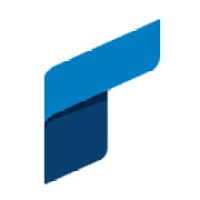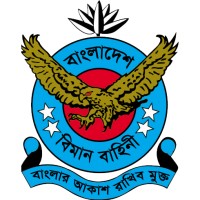
EUMETSAT Company Cyber Security Posture
eumetsat.intEUMETSAT is the European operational satellite agency for monitoring weather, climate and the environment from space. We operate a system of meteorological satellites that observe the atmosphere and ocean and land surfaces – 24 hours a day, 365 days a year. This data is supplied to the National Meteorological Services of the organisation's member and cooperating states in Europe, as well as other users worldwide. The service provided by EUMETSAT helps to enhance and safeguard the daily lives of European citizens. They aid meteorologists in identifying and monitoring the development of potentially dangerous weather situations and in issuing timely forecasts and warnings to emergency services and local authorities, helping to mitigate the effects of severe weather and protecting human life and property. This information is also critical to the safety of air travel, shipping and road traffic, and to the daily business of farming, construction and many other industries. Account monitored Mon-Fri 09:00-18:00 CET. For general enquiries, please contact: [email protected] For user support, please contact: [email protected]
EUMETSAT Company Details
eumetsat
812 employees
50459.0
336
Defense and Space Manufacturing
eumetsat.int
Scan still pending
EUM_4381093
In-progress
Between 900 and 1000
This score is AI-generated and less favored by cyber insurers, who prefer the TPRM score.
 EUMETSAT Global Score
EUMETSAT Global Score.png)

EUMETSAT Company Scoring based on AI Models
| Model Name | Date | Description | Current Score Difference | Score |
|---|---|---|---|---|
| AVERAGE-Industry | 03-12-2025 | This score represents the average cybersecurity rating of companies already scanned within the same industry. It provides a benchmark to compare an individual company's security posture against its industry peers. | N/A | Between 900 and 1000 |
EUMETSAT Company Cyber Security News & History
| Entity | Type | Severity | Impact | Seen | Url ID | Details | View |
|---|---|---|---|---|---|---|---|
| EUMETSAT | Ransomware | 100 | 6/2025 | EUM601061325 | Link | ||
Rankiteo Explanation : Attack threatening the organization’s existenceDescription: EUMETSAT, a European meteorological organization, was victimized by Fog ransomware. The attack was atypical, utilizing legitimate and open-source tools like Syteca for logging keystrokes and grabbing passwords, Stowaway for payload dropping, and SMBExec for execution. The attackers accessed additional systems, mapped out the network, and deployed the encryptor, causing significant disruptions and potential data leaks. | |||||||
EUMETSAT Company Subsidiaries

EUMETSAT is the European operational satellite agency for monitoring weather, climate and the environment from space. We operate a system of meteorological satellites that observe the atmosphere and ocean and land surfaces – 24 hours a day, 365 days a year. This data is supplied to the National Meteorological Services of the organisation's member and cooperating states in Europe, as well as other users worldwide. The service provided by EUMETSAT helps to enhance and safeguard the daily lives of European citizens. They aid meteorologists in identifying and monitoring the development of potentially dangerous weather situations and in issuing timely forecasts and warnings to emergency services and local authorities, helping to mitigate the effects of severe weather and protecting human life and property. This information is also critical to the safety of air travel, shipping and road traffic, and to the daily business of farming, construction and many other industries. Account monitored Mon-Fri 09:00-18:00 CET. For general enquiries, please contact: [email protected] For user support, please contact: [email protected]
Access Data Using Our API

Get company history
.png)
EUMETSAT Cyber Security News
FOG Ransomware Group Leaks Source Code of 19 Victims on Dark Web
The Linux variant of FOG ransomware, observed in attacks on FlightSim Studio AG (Switzerland) and 1xINTERNET (Germany), targets virtual machine ...
Eumetsat’s Meteosat-9 Takes over Coverage from Meteosat-8
Eumetsat is the European Organisation for the Exploitation of Meteorological Satellites, an intergovernmental agency that monitors weather, ...
Mapping tomorrow’s weather with Big Data
When Europe needed to turn satellite data into the weather products of tomorrow, Thales stepped up with a Big Data solution.
GMV Wins Eumetsat Deal for Optical Data Services for Meteosat Satellites
With this new service, GMV strengthens its strong commitment with Eumetsat, being one of its main providers of ground segment software ...

EUMETSAT Similar Companies

Leidos
Leidos is a Fortune 500® innovation company rapidly addressing the world’s most vexing challenges in national security and health. The company's global workforce of 48,000 collaborates to create smarter technology solutions for customers in heavily regulated industries. Headquartered in Reston, Virg

Rheinmetall
As an integrated technology group, the listed company Rheinmetall AG, headquartered in Düsseldorf, stands for a company that is as strong in substance as it is successful internationally, and that is active in various markets with an innovative range of products and services. Rheinmetall is a leadin

Armada de Chile
La Armada de Chile es una de las instituciones que conforman las Fuerzas Armadas de Chile, que existe para la defensa de la patria y son esenciales para la seguridad nacional. Tiene como misión “Proveer un Poder Naval y un Servicio Marítimo, que contribuya a resguardar la soberanía e integrida

United States Air Force
The mission of the United States Air Force is to fly, fight and win … in air, space and cyberspace. To achieve that mission, the Air Force has a vision of Global Vigilance, Reach and Power. That vision orbits around three core competencies: developing Airmen, technology to war fighting and integr

UK Ministry of Defence
We protect the security, independence and interests of the United Kingdom at home and abroad. We work with our allies and partners whenever possible. Our aim is to ensure that the UK’s Armed Forces have the training, equipment and support necessary for their work, and that we keep within budget.

Bangladesh Air Force
The Bangladesh Air Force (Bangladesh Biman Bahini in Bangla), is the air arm of the Bangladesh Armed Forces. The embryo of Bangladesh Air Force (BAF) was formed on 28 September 1971 during the war of Liberation with only three aircraft. During last 43 years Bangladesh Air Force (BAF) has been develo

Frequently Asked Questions
Explore insights on cybersecurity incidents, risk posture, and Rankiteo's assessments.
EUMETSAT CyberSecurity History Information
How many cyber incidents has EUMETSAT faced?
Total Incidents: According to Rankiteo, EUMETSAT has faced 1 incident in the past.
What types of cybersecurity incidents have occurred at EUMETSAT?
Incident Types: The types of cybersecurity incidents that have occurred incident Ransomware.
How does EUMETSAT detect and respond to cybersecurity incidents?
Detection and Response: The company detects and responds to cybersecurity incidents through third party assistance with Symantec.
Incident Details
Can you provide details on each incident?

Incident : Ransomware
Title: Fog Ransomware Attack Using Legitimate and Open-Source Tools
Description: Fog ransomware was seen using Syteca, a legitimate employee monitoring tool, to log keys and grab passwords. It also used open-source tools for payload dropping and file exfiltration. The attack was described as 'atypical' by researchers.
Type: Ransomware
Attack Vector: Compromised VPN credentials, Pass-the-hash attacks, Legitimate employee monitoring tool (Syteca), Open-source tools (Stowaway, SMBExec, GC2)
Threat Actor: Fog ransomware operators
Motivation: Financial gain through ransomware
What are the most common types of attacks the company has faced?
Common Attack Types: The most common types of attacks the company has faced is Ransomware.
How does the company identify the attack vectors used in incidents?
Identification of Attack Vectors: The company identifies the attack vectors used in incidents through Compromised VPN credentials.
Impact of the Incidents
What was the impact of each incident?

Incident : Ransomware EUM601061325
Data Compromised: Keystrokes and passwords
What types of data are most commonly compromised in incidents?
Commonly Compromised Data Types: The types of data most commonly compromised in incidents are Keystrokes and passwords.
Which entities were affected by each incident?

Incident : Ransomware EUM601061325
Entity Type: Semiconductor company
Industry: Technology
Location: Belgium

Incident : Ransomware EUM601061325
Entity Type: Meteorological organization
Industry: Government
Location: Europe

Incident : Ransomware EUM601061325
Entity Type: Educational institution
Industry: Education
Location: Switzerland

Incident : Ransomware EUM601061325
Entity Type: Automotive service franchise
Industry: Automotive
Location: Australia
Response to the Incidents
What measures were taken in response to each incident?

Incident : Ransomware EUM601061325
Third Party Assistance: Symantec
How does the company involve third-party assistance in incident response?
Third-Party Assistance: The company involves third-party assistance in incident response through Symantec.
Data Breach Information
What type of data was compromised in each breach?

Incident : Ransomware EUM601061325
Type of Data Compromised: Keystrokes and passwords
Data Exfiltration: Google Sheets and SharePoint
Ransomware Information
Was ransomware involved in any of the incidents?
References
Where can I find more information about each incident?

Incident : Ransomware EUM601061325
Source: BleepingComputer
Where can stakeholders find additional resources on cybersecurity best practices?
Additional Resources: Stakeholders can find additional resources on cybersecurity best practices at and Source: BleepingComputer.
Initial Access Broker
How did the initial access broker gain entry for each incident?

Incident : Ransomware EUM601061325
Entry Point: Compromised VPN credentials
Backdoors Established: GC2
Post-Incident Analysis
What is the company's process for conducting post-incident analysis?
Post-Incident Analysis Process: The company's process for conducting post-incident analysis is described as Symantec.
Additional Questions
General Information
Who was the attacking group in the last incident?
Last Attacking Group: The attacking group in the last incident was an Fog ransomware operators.
Impact of the Incidents
What was the most significant data compromised in an incident?
Most Significant Data Compromised: The most significant data compromised in an incident was Keystrokes and passwords.
Response to the Incidents
What third-party assistance was involved in the most recent incident?
Third-Party Assistance in Most Recent Incident: The third-party assistance involved in the most recent incident was Symantec.
Data Breach Information
What was the most sensitive data compromised in a breach?
Most Sensitive Data Compromised: The most sensitive data compromised in a breach was Keystrokes and passwords.
References
What is the most recent source of information about an incident?
Most Recent Source: The most recent source of information about an incident is BleepingComputer.
Initial Access Broker
What was the most recent entry point used by an initial access broker?
Most Recent Entry Point: The most recent entry point used by an initial access broker was an Compromised VPN credentials.
What Do We Measure?
















Every week, Rankiteo analyzes billions of signals to give organizations a sharper, faster view of emerging risks. With deeper, more actionable intelligence at their fingertips, security teams can outpace threat actors, respond instantly to Zero-Day attacks, and dramatically shrink their risk exposure window.
These are some of the factors we use to calculate the overall score:
Identify exposed access points, detect misconfigured SSL certificates, and uncover vulnerabilities across the network infrastructure.
Gain visibility into the software components used within an organization to detect vulnerabilities, manage risk, and ensure supply chain security.
Monitor and manage all IT assets and their configurations to ensure accurate, real-time visibility across the company's technology environment.
Leverage real-time insights on active threats, malware campaigns, and emerging vulnerabilities to proactively defend against evolving cyberattacks.




